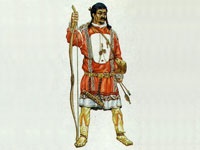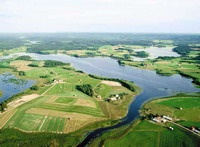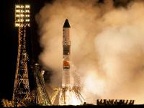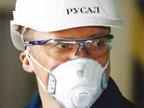|
|
Social and natural resourcesHistory The name of KhMAO-Ugra region has a thousand year old history. "Ugra" was the collective name that Russian merchants gave to the local peoples - the Khanty and the Mansi. The first written mention of Ugra dates back to XI century, but people came to live here long before that. Archeologists found 4,000 well-preserved historical monuments of the Stone Age and the Bronze Age. Some of them have been transformed into tourist attractions.
Yermak's campaign to Siberia, that was sang of in Russian heroic epics, relates to this period. In XVIII century, Russian settlers started to actively inhabit these lands. Towns and monasteries started to appear, trade became active. A new life for this region started in the 1950's. Oil was found here. And soon enough, the industrial production began.
Geography, natural resources KhMAO-Ugra is located in the West Siberian Plain and has a regional area of 534,000 sq. km.
Over a third of this area is covered with forests; 80% are coniferous forests of pine and cedar. The total reserve of timber is 3 billion cubic metres. The forests are home to various game animals - sable, muskrat, and forest birds. Rivers and lakes contain reserves of valuable fish - Siberian sturgeon, whitefish, and salmon.
Towns and population Over the last 30 years the population of the Okrug has increased by over 1 million people - this is all due to the rapid development of the oil and gas producing industry. In 2008, the average annual number of Ugra's resident population was 1.5 million people. Their average age was 32. This can be accounted for by the fact that most people came here in the 1980's to develop oil resources. Even now people are employed in the oil fields. Thanks to this, people here have one of the highest salary levels in Russia.
Science Professional and academic training is provided in 68 higher education establishments. Mostly, these are represented here by branches of Russian colleges and universities. The Tyumen State University and the Tyumen State Oil and Gas University have the largest number of departments. Generally, students are trained in specialties related to mining and processing of natural resources. For every 10,000 citizens, Ugra has 129 students of vocational training and 357 students of higher professional education.
|
|
| Regions | Project participants | Investment projects | Consulates and Trade Offices | News and Analysis | About the Project |
|
© RusBusinessNews, 2009. All rights reserved. Establishing a hyperlink to RIA RusBusinessNews is required for using any of the material published on this website. News and analytical reviews are translated into foreign languages by the TRANSLIT Translation Agency |
«Sum of technologies»® Web design Site promotion |





